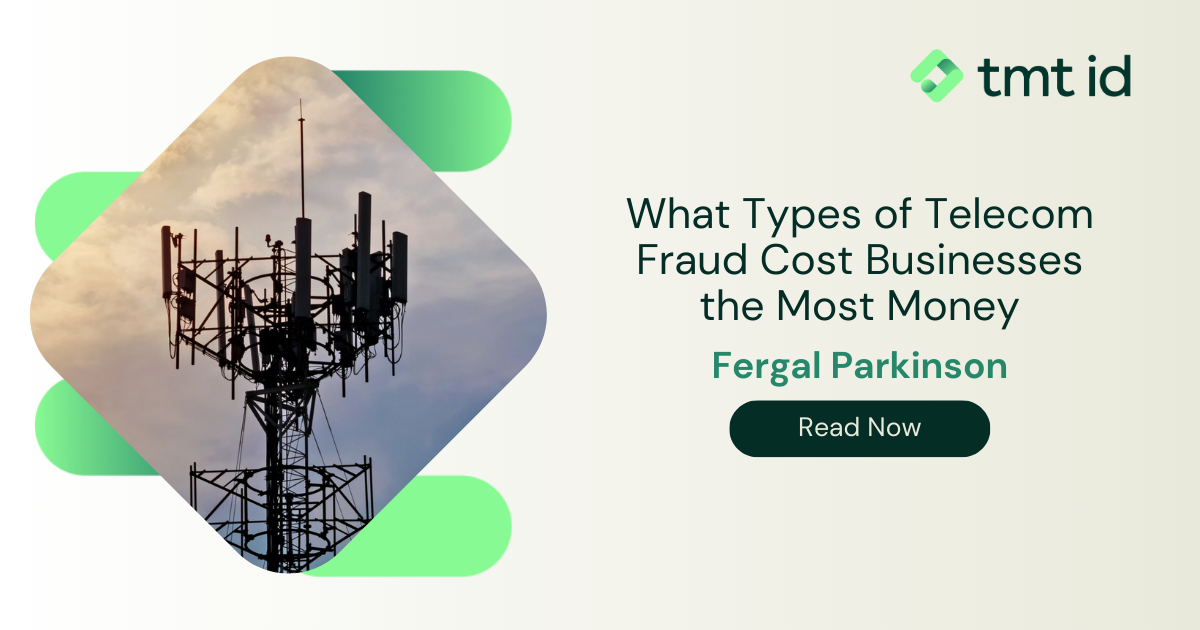
Telecom fraud has evolved to exploit gaps in security, enabling fraudsters to access sensitive information, steal funds, and cause significant disruption. For any organisation that relies on mobile number data to authenticate transactions, telecom fraud can have a substantial financial impact.
Telecom fraud is any misuse or exploitation of telecommunications systems and services to gain unauthorised access to data, revenue, or resources. Fraudsters commonly manipulate mobile number data to impersonate legitimate users, hijack accounts, or conduct illegal transactions. This type of fraud costs businesses billions of pounds each year, with industries such as finance, e-commerce, and insurance services particularly affected.
Telecom fraud poses a serious risk to businesses, not only from a financial perspective but also in terms of customer trust and regulatory compliance. With mobile numbers often serving as the primary method of verifying user identities, businesses need to be vigilant about safeguarding their telecom data to avoid losses and maintain a secure customer experience.
Telecom fraud impacts businesses in several costly ways, both directly and indirectly. Below are some of the major financial implications:
Direct Financial Losses
Fraudulent activities like unauthorised transactions, account takeovers, and call diversions can result in immediate financial losses. In cases of account takeover, businesses often have to reimburse affected customers, incurring expenses related to chargebacks and uncollectible debts.
Increased Operational Costs
Fraud prevention and remediation come at a cost. From investing in fraud detection software to increasing customer support staff to handle complaints, addressing telecom fraud strains resources. The operational expenses associated with investigating and mitigating fraud can quickly add up, especially for larger businesses.
Reputational Damage and Customer Loss
When customers fall victim to fraud on a company’s platform, the business suffers reputational damage. As customers lose confidence in a brand’s ability to protect them, they are likely to switch to competitors, resulting in lost revenue and a potential decrease in long-term customer value.
Legal and Compliance Costs
Many businesses are legally required to safeguard customer information, including telecom data. Failing to do so can lead to regulatory fines and legal repercussions. Compliance with data protection regulations, such as the GDPR, is essential but costly, and breaches can carry severe financial penalties and damage to a company’s public image.

Several types of telecom fraud are particularly damaging to businesses, both in terms of frequency and financial cost. Below are some of the most common:
SIM Swap Fraud
SIM swap fraud occurs when fraudsters convince a telecom provider to issue them a replacement SIM card tied to a victim’s mobile number. Once they have control of the number, they can bypass multi-factor authentication, gaining access to sensitive accounts.
Banks and financial institutions are frequent targets of SIM swap fraud, with losses often reaching millions in unauthorised transactions. One high-profile case in the UK resulted in over £3 million in fraudulent transfers from customer accounts, costing the bank in reimbursements, legal fees, and reputation damage.
Impact: In 2021 alone, SIM swap fraud cost U.S. consumers over $68 million, and this tactic has gained international traction as mobile numbers become the backbone of digital identity.
International Revenue Share Fraud (IRSF)
IRSF involves artificially inflating call traffic to high-cost premium-rate numbers, generating revenue for fraudsters via revenue-sharing schemes. This can lead to exorbitant call charges for businesses before they detect the pattern.
Commercial call centres are often a target. A large call centre in the US experienced an IRSF attack that led to several thousand dollars in inflated charges over a weekend. The incident caused operational disruptions and required additional security measures.
Impact: IRSF is estimated to cost the telecom industry around $6.1 billion globally each year, with the financial burden often passed on to business customers in the form of increased rates and service restrictions.
Call Forwarding Fraud
Fraudsters manipulate call forwarding services to intercept calls intended for legitimate users. Once they gain access to calls, they can gather information or disrupt services, impacting a business’s operations and potentially leading to data breaches.
Impact: Call forwarding fraud can cost organisations significant amounts in customer service costs and, in severe cases, can lead to regulatory investigations for data protection breaches.
Wangiri Fraud
In Wangiri fraud, fraudsters place a “one-ring” call from an international number, enticing the recipient to call back. The returned call connects to a premium-rate number, generating high charges for the victim.
Impact: This tactic has led to thousands of pounds in lost revenue for businesses, especially in industries like telecommunications and customer service, which rely heavily on phone support. A notable case in Australia involving Telstra revealed a significant financial impact on customers and businesses alike.
Subscription Fraud
Subscription fraud occurs when criminals sign up for telecom services or products using false identities, resulting in debts that go unpaid. This type of fraud is particularly damaging for telecommunications providers but also affects businesses that use telecom data for customer verification.
Impact: Globally, subscription fraud costs the telecom industry over $4 billion each year, creating a knock-on effect for businesses reliant on telecom services and data.
These examples highlight the enormous financial and operational costs associated with large-scale telecom fraud. They also demonstrate the urgency for businesses to adopt robust telecom security solutions.
TMT ID specialises in mobile number verification, providing solutions that help businesses combat telecom fraud. TeleShield offers a suite of advanced features designed to prevent fraud by monitoring and verifying mobile number activity in real time.
Advanced Verification for Call and SMS Services
TeleShield validates mobile numbers in real time, helping businesses avoid fraud associated with IRSF, Wangiri, and call forwarding schemes. This verification ensures that only legitimate users can interact with a company’s telecom services, reducing the risk of inflated charges and service disruptions.
Proactive Alerts and Insights
Using advanced analytics, TeleShield notifies businesses of unusual telecom patterns, allowing them to respond to potential threats immediately. This proactive approach is key to reducing the financial and reputational damage caused by large-scale telecom fraud.
Detect Spoofed Numbers
Fraudsters committing various types of fraud where telephony is a vehicle will often disguise their number in order to attempt to bypass various security measures (for example ones that ban calls from withheld numbers) or social norms (for example people who don’t answer calls from foreign numbers). Although the process and technology to disguise ones number is relatively easy to use, Fraudsters will often not be so sophisticated as to pick numbers that are actually real and plausible. TeleShield can help to identify these spoofed numbers more easily using the vast array of numbering data available to it.
Investing in TeleShield not only reduces direct losses from telecom fraud but also mitigates the indirect costs of fraud, such as operational expenses and customer loss. By improving the security of telecom interactions, businesses can protect customer trust and ensure compliance with regulatory standards.
Telecom fraud is a costly threat that impacts businesses across various industries. From SIM swap and IRSF to Wangiri fraud, the financial damage can be staggering. To protect against these risks, businesses need robust verification solutions like TeleShield, which offers advanced mobile number intelligence and real-time protection against telecom fraud.
Last updated on June 27, 2025



TeleShield is a powerful telephone fraud prevention API which protects both your business and your genuine customers. It provides robust and dependable security against a range of telephone-based fraudulent activities such as flash calls, International Revenue Share Fraud (ISRF), Origin Based Rating (OBR), ‘Wangiri’ scams, premium rate number fraud, telephone number spoofing and more
Learn about TeleShieldWe provide the most comprehensive device, network and mobile numbering data available
Contact us > Chat to an expert >